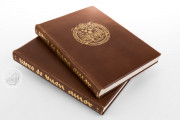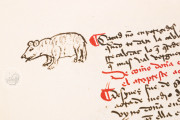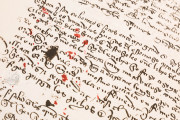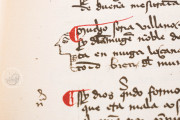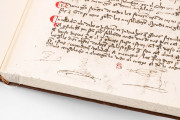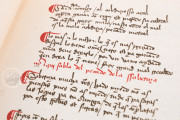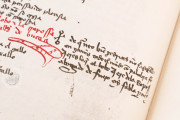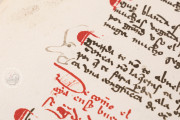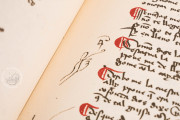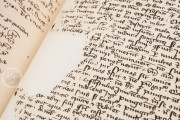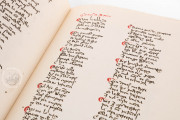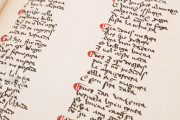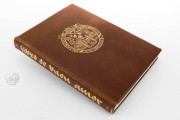The Salamanca manuscript of the Libro de Buen Amor was copied in Salamanca in the first quarter of the fifteenth century. It is one of only three surviving medieval manuscripts of the Spanish poem—perhaps better characterized as a collection of stories and prayers—many recounting amorous encounters. According to the narrator, these bawdy tales ultimately inform the reader about the buen amor ("good love") of God, while serving also as guides to sexual seduction and the art of poetry. The author identifies himself as Juan Ruiz, Archpriest of Hita, the adjudicator of church law for a large region in central Spain. The Salamanca manuscript, copied by Alfonso de Paradinas, contains the longest surviving version of the text and is remarkable for its many marginal vignettes, including human heads, animals, and many pointing hands.
The poem was composed around 1340, and the date 1343 is cited in the colophon of the Salamanca manuscript—probably the date of its principal exemplar and perhaps, but doubtfully, the date of an authorial revision of the text. The stories, many with embedded fables enacted by allegorical figures, are told in the first person, mostly in the voice of the archpriest, although the one story that ends in marriage is told by "Don Melón."
Interaction of Readers with Text
The marginalia in the manuscript is the work of many readers, presumably all college-age men. A series of sketches seems to be the work of one scribe. They show profile human heads, a bird, a quadruped with a prominent tongue, and a monkey or demon (fols. 34v, 36r, 42v, 51v, 98r). Their meaning and placement are puzzling.
An Eclectic Text
The author of the poem drew on a variety of secular and Christian sources, including the work of the Roman poet Ovid (d. 16/17 CE), fables, folk tales, satirical songs, the Bible, sermons, and exempla (Christian moralizing stories). The story of Lady Plum and Don Melón is taken from the twelfth-century Latin comedy Pamphilus de amore. Several prayers focused on the Virgin Mary are also included.
Articulation of the Text
The manuscript is remarkable for its extensive system of rubrics. Guide words in black ink can be seen under the red ink of the rubrics, perhaps an indication that they were composed especially for this copy. They can be quite long and descriptive: for example, "How love punishes the archpriest, who has good morals himself and, above all, is careful not to drink too much white and red wine" (fol. 34v).
A Sojourn in Madrid
The codex entered the library of the Colegio de San Bartolomé attached to the University of Salamanca in 1440 and may have previously belonged to Diego de Anaya (d. 1437), who founded the Colegio in 1401. After the Colegio was suppressed in 1798, the codex was deposited at the Biblioteca Real in Madrid until 1954, at which time it returned to Salamanca to find its place in the university library.
We have 1 facsimile edition of the manuscript "Libro de Buen Amor": Libro de Buen Amor facsimile edition, published by Edilan, 1975
Request Info / Price

